Panasonic Lumix DMC-L10
-
-
Written by Gordon Laing
Panasonic Lumix DMC-L10 Studio resolution / JPEG and RAW results
Panasonic Lumix DMC-L10 results continued…
| Support this site by shopping via these links | |||||||||||||||||||||||||||||||||||
 |
To measure and compare the Panasonic Lumix DMC-L10’s resolving power we photographed the Enhanced Digital Camera Resolution Chart with it and a number of rival models, each using their best quality JPEG and default image tone and sharpening settings. We tested the Panasonic Lumix DMC-L10 using its standard Leica 14-50mm f3.8-5.6 kit lens. The crops are taken from the original images, saved as High Quality JPEGs in Photoshop CS2 and presented here at 100%. Each number represents 100 lines per picture height (lpph), so a figure of 20 means a resolution of 2000 lpph. |
Set to Fine JPEG mode, the Panasonic Lumix DMC-L10 resolved 2250 and 2300 lpph of horizontal and vertical resolution respectively. This is a great result for the L10, out-resolving the Olympus E-510, despite both being fitted with the same sensor – it really illustrates the benefit of the L10’s top quality kit lens. Scroll down for RAW results, or head straight to our L10 noise results. Note: the 400D / XTi and D80 captured a wider 3:2 frame, but the focal length of each camera was adjusted to deliver the same vertical field of view. Since the 400D / XTi and D80 crops below are taken from the same 4:3 area as the L10, they’re effectively being treated here as 8.9 Megapixel 4:3 cameras. |
Panasonic Lumix DMC-L10 with Leica 14-50mm |
Olympus E-510 with ZD 14-42mm ED | |
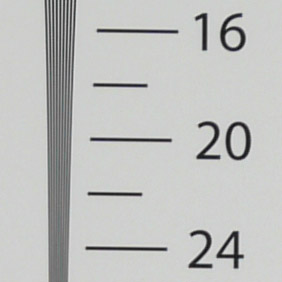 | 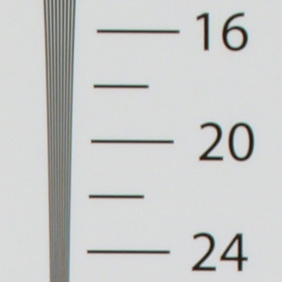 | |
2250 lpph, 14-50mm at 25mm, f8, 100 ISO |
2150 lpph, 14-42mm at 25mm, f8, 100 ISO | |
Canon EOS 400D / XTi with EF-S 18-55mm |
Nikon D80 with DX 18-55mm II | |
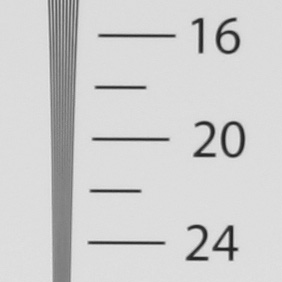 | 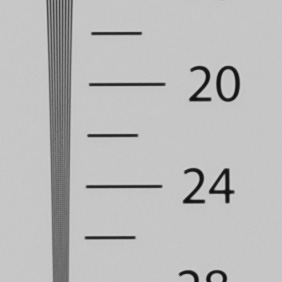 | |
2000 lpph, EF-S 18-55mm at 35mm, f8, 100 ISO |
2175 lpph, DX 18-55mm II at 35mm, f8, 100 ISO |
Panasonic Lumix DMC-L10 with Leica 14-50mm |
Olympus E-510 with ZD 14-42mm ED | |
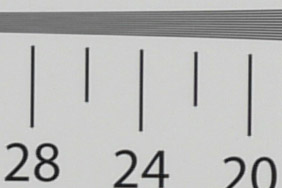 | 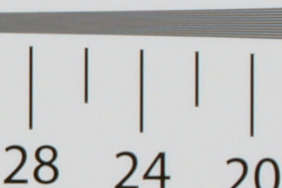 | |
2300 lpph, 14-50mm at 25mm, f8, 100 ISO |
2150 lpph, 14-42mm at 25mm, f8, 100 ISO | |
Canon EOS 400D / XTi with EF-S 18-55mm |
Nikon D80 with DX 18-55mm II | |
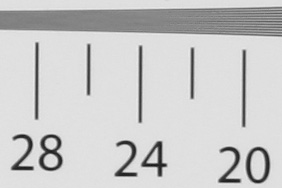 | 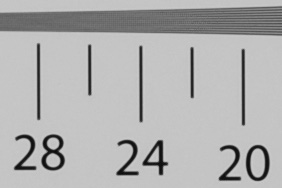 | |
2100 lpph, EF-S 18-55mm at 35mm, f8, 100 ISO |
2150 lpph, DX 18-55mm II at 35mm, f8, 100 ISO |
Panasonic Lumix DMC-L10 Studio resolution: JPEG versus RAW
We photographed the test chart in the L10’s RAW plus Fine JPEG mode, allowing us to directly compare images created from exactly the same data. Below are crops taken from the original JPEG file alongside the RAW version, processed in the supplied SilkyPix Developer Studio 2.1SE software.
We measure the resolution at the point where either the lines are no longer discernable as being separate, or at the point where moiré kicks-in. In the RAW examples below, moiré has resulted in the L10 scoring the same as the JPEG, but it’s clear the lines can still be separated at much higher resolutions. So while we’re scoring the same here, there’s clearly some benefits in shooting RAW for the highest measurable resolution. Now let’s check out the L10 noise results.
Panasonic Lumix DMC-L10 JPEG with Leica 14-50mm |
Panasonic Lumix DMC-L10 RAW with Leica 14-50mm | |
 | 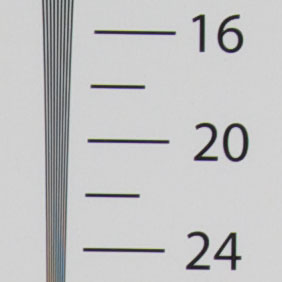 | |
2250 lpph, 14-50mm at 25mm, f8, 100 ISO |
2250 lpph, 14-50mm at 25mm, f8, 100 ISO |
Panasonic Lumix DMC-L10 JPEG with Leica 14-50mm |
Panasonic Lumix DMC-L10 RAW with Leica 14-50mm | |
 | 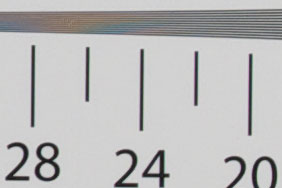 | |
2300 lpph, 14-50mm at 25mm, f8, 100 ISO |
2300 lpph, 14-50mm at 25mm, f8, 100 ISO |




